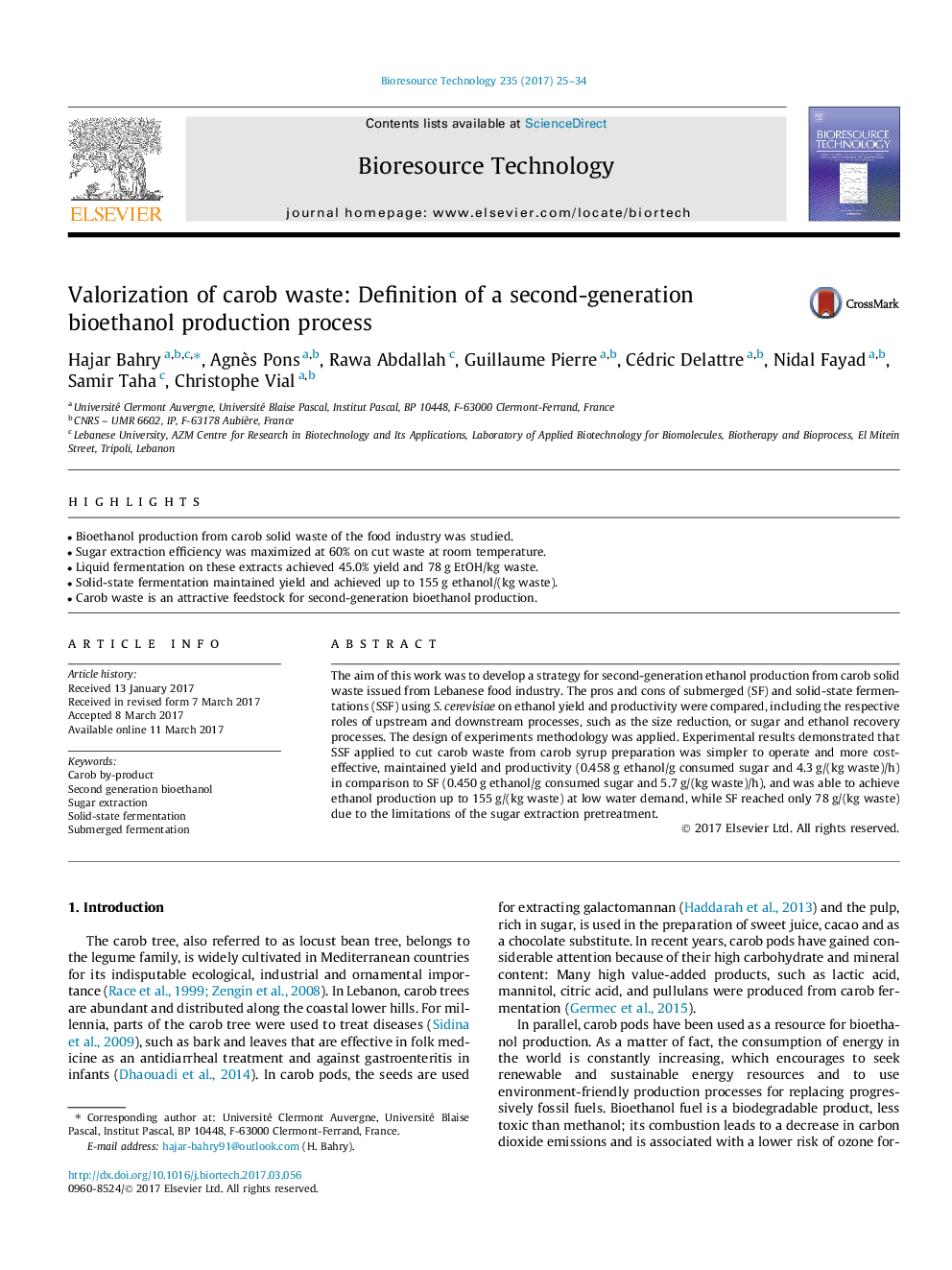| کد مقاله | کد نشریه | سال انتشار | مقاله انگلیسی | نسخه تمام متن |
|---|---|---|---|---|
| 4997368 | 1459908 | 2017 | 10 صفحه PDF | دانلود رایگان |
- Bioethanol production from carob solid waste of the food industry was studied.
- Sugar extraction efficiency was maximized at 60% on cut waste at room temperature.
- Liquid fermentation on these extracts achieved 45.0% yield and 78Â g EtOH/kg waste.
- Solid-state fermentation maintained yield and achieved up to 155Â g ethanol/(kg waste).
- Carob waste is an attractive feedstock for second-generation bioethanol production.
The aim of this work was to develop a strategy for second-generation ethanol production from carob solid waste issued from Lebanese food industry. The pros and cons of submerged (SF) and solid-state fermentations (SSF) using S. cerevisiae on ethanol yield and productivity were compared, including the respective roles of upstream and downstream processes, such as the size reduction, or sugar and ethanol recovery processes. The design of experiments methodology was applied. Experimental results demonstrated that SSF applied to cut carob waste from carob syrup preparation was simpler to operate and more cost-effective, maintained yield and productivity (0.458Â g ethanol/g consumed sugar and 4.3Â g/(kg waste)/h) in comparison to SF (0.450Â g ethanol/g consumed sugar and 5.7Â g/(kg waste)/h), and was able to achieve ethanol production up to 155Â g/(kg waste) at low water demand, while SF reached only 78Â g/(kg waste) due to the limitations of the sugar extraction pretreatment.
Journal: Bioresource Technology - Volume 235, July 2017, Pages 25-34
